- Home
- Antonia Fraser
Cromwell Page 18
Cromwell Read online
Page 18
In the manner of the time, the foot were placed in the centre, flanked by cavalry on both wings. On the Parliamentary right, close by Long Marston there were about five-thousand-odd men under Sir Thomas Fairfax – four thousand horse, five hundred dragoons and six hundred musketeers – some of them Fairfax’s own “new levied troops”, and some Scots; Fairfax’s second-in-command was another Yorkshire man, the young and popular Colonel John Lambert. Next were drawn up a total of fifteen brigades of foot, with two regiments to the brigade, to make a total of about eleven thousand men under the general command of Manchester and the Scot Leven. Lastly came another great body of cavalry on the left wing under the command of Cromwell himself – two thousand five hundred men under his personal control, the Scottish dragoons under Colonel Hugh Fraser on the extreme left ending up at Tockwith, and behind a further six hundred Scots horse under David Leslie.
The Royalist “battalia” or line, was drawn up below the TockwithMarston road, that is to say topographically slightly lower than that of Parliament and the Scots, and the conventional distance of about four hundred yards away, which meant that it was slightly beyond the range of the lighter pieces of ordnance generally in use at battlefields. But there was also a ditch, as well as the road, between the two armies, lying on the Royalist side, and curving irregularly to meet the road itself near Tockwith.1 The Royalists also made use of this convenient stop, lining it with their musketeers of the “forlorn hope” as the advance guard was generally known. Their baggage on the other hand was at Wilstrop Wood, and the back of their line was shut in by White Sike Close. Between the two lay roughly the same disposition of troops as on the opposing side, a centre of foot and two wings of cavalry.
On the Royalist left facing Fairfax, was the dashing but unstable cavalry commander Lord Goring, a man whose “vivacity” impressed his contemporaries, but whose character defects and inability to accept the authority of another was to prove one of the major problems of the Royalist command. The Royalist foot in the centre, totalling about eleven thousand, included some men brought up by Rupert from the south and some of Newcastle’s “Lambs” or “Whitecoats”, so called because their jackets were made of undyed woollen cloth. On the Royalist right wing facing Cromwell was Rupert’s own cavalry, about two thousand six hundred strong, with Lord Byron and his regiment of horse in the front rank – an ominous piece of positioning since it was Byron whose precipitate charge of cavalry had caused much havoc at Edgehill two years earlier, and events were to show that he had not learnt much tactical wisdom since. Rupert had also lined his cavalry with musketry to break the first charge according to the Swedish fashion. Finally at the rear of the line Rupert stationed another smaller regiment of cavalry, about one thousand five hundred men altogether including his own lifeguards, known as the Bluecoats.
Both sides possessed some guns – although Parliament far outnumbered the Royalists with their twenty-five pieces – and some intermittent fire was exchanged during the afternoon while the two lines were being drawn up. Sir Henry Slingsby observed that the Parliamentary armies were merely “shewing their teeth” with their random fire, since presently it stopped and they then fell to singing their Psalms among the cornfields. Something like forty thousand men now faced each other across the open ground, so near that Cromwell’s Scoutmaster said afterwards that the two wings were a musket shot apart. The Royalists at any rate had mustered about eighteen thousand by the time Newcastle and his second-in-command Lord Eythin made their belated arrival from York to receive Rupert’s grim words of welcome: “My lord, I wish you had come sooner with your forces…” Estimates of the Parliamentary and Scottish forces vary from twenty-seven thousand to something nearer twenty-two or twenty-three thousand, with opinion now inclining towards the lower figure.*2 ( * Brigadier Peter Young in Marston Moor uses the evidence of Lumsden’s plan of the battle, unknown to earlier writers, to suggest that the Parliamentary forces may well have been about 5,000 less than has been supposed, which again makes Rupert’s challenge more plausible.)
In the afternoon light the gay billowing standards of war provided not only much traditional colour for the battlefield but also the much-needed means of recognition of the various troops and their commanders: for regimental colours as such did not yet exist, and it was left to each troop and company to be marked by its own standard, guidon or colour. The cornets of the cavalry were generally of painted taffeta or perhaps damask, and borne by the fifth commissioned officer in the troop, who was thus christened by the name of Cornet. They might bear political cartoons or religious or loyal slogans, ranging from a picture of a mastiff being harried by five little beagles, out of whose mouth came forth the legend: “Pym, Pym, Pym” and in Latin “how long will you abuse our patience?”, to the simpler motto: “Pro Rege et Regno”. The infantry colours were much larger than those of the cavalry, roughly six foot by six foot to the two by two foot of the horse: that of the Colonel was generally a plain colour, the Lieutenant-Colonel would have the cross of St George in the corner next to the staff, and so on downwards with various spots and devices to distinguish the lesser officers. The Scottish colours bore St Andrew’s Cross instead of the cross of St George.3
Obviously in an age not only before regimental colours but also before any coherent policy for uniforms, these individual rallying-points were highly important. It was true that the Royalists tended to wear crimson silk scarves and their opponents orange silk during the early stages of the Civil War, but there were many variations, as a result of which some sort of field sign was often adopted before a major battle involving many different regiments – the field sign for Marston Moor was a white favour, a handkerchief or even a piece of paper, in the hat. There was certainly no difference in the clothing of the various commanders, and the pictorially traditional lacey splendour of the Cavalier as opposed to the Puritan severity of the Roundhead commander has no basis in historical fact. On both sides, officers could be distinguished simply by the ornate nature of their dress, having no particular badge of rank to mark them out. The cavalry generally wore buff coats of thick leather with their armour over them, although some ill-equipped men had to make do with their buff coats alone. The pikemen also wore leather coats and additional thighpieces.
It was only in some picturesque coats and facings worn by individual regiments (in which there was at least a tendency among the Parliamentarians of the Eastern Association to concentrate on red) that the future convenient uniformity of army clothing was at all prefigured. Manchester’s foot for example had coats of green cloth lined with red; Colonel Montagu’s men wore red faced with white; Essex’s men wore red lined with blue. Rupert’s own lifeguards on the other hand wore blue, Newcastle’s wore white, and Colonel Tillier’s green. But clearly confusion, mistaking friend or foe, and general ignorance as to the course of the battle in another part of the line were all made a great deal more possible by such colourful-and often misleading – diversity. So that the symbolic importance attached to the colours, and the triumph over their capture is not hard to understand. These colours were the tangible proofs of victory after the event, as they were the focus for the men on both sides during the struggle itself.
The scene might be gay, but conditions for the men waiting patiently in the wet fields were not. The great question remained: would a battle be fought at all that day? Prince Rupert was one who solved the dilemma to his own satisfaction. In vain Newcastle referred doubtfully to the enemy’s advantages of “sun, wind and ground”. In the Prince’s view there would be no battle. He would begin no action against the enemy till early the next morning, he told Newcastle, and so saying he retired from the lines for supper, feeling no doubt that a day which had already contained an amazing march and the irritatingly slow arrival of Newcastle himself, had contained enough. And that was that. But Newcastle’s forebodings were fully justified. For in the meantime only a few hundred yards away the Roundhead commanders had other plans for the first charge. While Newcastle smoked a consolatory p
ipe of tobacco in his coach and Rupert enjoyed his supper, the decision to attack was taken by the armies of Parliament. The senior commander by far on their side was the sixty-four-year-old Scottish Earl of Leven, the “little crooked soldier” as the Scottish divine Baillie described him, with years of military experience behind him.4 Although the final decision was probably made by a council of war (at which Cromwell would have been present) it seems reasonable to suppose that it was Leven who from Cromwell’s Plump observed the natural advantage of the ground, and the superiority of numbers that Parliament currently enjoyed – which, if he made the inspection before all Newcastle’s troops had arrived, would have been even more striking. A surprise attack would further weight the scales to their advantage.
The sky was already turning dark with an impending storm, and soon after seven o’clock ominous claps of thunder were heard. Drenching rain now began to hail down on the heads of both armies. It was at this moment that on the Parliamentary left wing, Cromwell’s well-tried men of the Eastern Association with Leslie’s Scots behind them, began one of their new type of charges, rapid, controlled, riding short-reined and shortstirruped, close in together, probably at something like a fast trot rather than the modern gallop. And now all the allied line was moving forward, appearing to Manchester’s chaplain Simeon Ashe, who was standing on the hill watching, in all its different components “like unto so many thick clouds”. It was Cromwell’s charge which went most ferociously: “We came down the hill in the bravest order and with the greatest resolution that ever was seen” wrote Scoutmaster-General Leonard Watson with pride afterwards. At this point Lord Byron attempted rather unwisely once more as at Edgehill to charge out ahead and meet Cromwell head on, which although perfectly usual tactics to employ when coping with a cavalry assault, had the unfortunate effect of rendering useless the fire of his own musketry by masking it. “By the improper charge of Lord Byron much harm was done” said Rupert’s diary afterwards.5 So Byron’s first line and part of his second line were routed; and at the same time much good work was done by the Scottish dragoons of Colonel Hugh Fraser (a man trained in the Swedish Army) in clearing the ditch of these same musketeers. Crawford also acquitted himself well by making a path across the ditch which could be used without encountering Rupert’s troops.
In the centre of the battle-line Manchester’s foot also surged forward valiantly and after eliminating the “forlorn hope” of the Royalists ahead of their battalia, managed to capture their guns. It was on the right that Sir Thomas Fairfax and his cavalry were from the start in trouble, if only because the ground they faced was particularly unsuitable for a cavalry charge, covered in bushes and scrub, and uncomfortably rutted, quite unlike the terrain which Cromwell had faced on the left. In the event Fairfax was already much harassed by Goring’s musketeers as he crossed the crucial ditch, and although a rapid charge did break Goring’s line in places, the results were not particularly fortunate. While some of Fairfax’s men pursued some of Goring’s cavalry towards York, Sir Thomas himself turned back, only to find that the course of battle had gone against him and he was actually surrounded by squadrons of enemy horse.
Nor was the prospect of the Parliamentary left wing quite so rosy since the effects of that first pulsing charge had worn off. Rupert was certainly not beaten yet, in fact he had barely entered the field, for his attention was only attracted to the melee by the unexpected hoarse shouts and raiding musket-fire which reached him as he “sat upon the earth at meat, at a pretty distance from his troops”. Most of his horsemen who were with him were dismounted and were lying on the ground. Rupert shot up from his ill-timed meal, gathered as many of his lifeguards to him as he could, and set off for the scene of the first rout by the Parliamentary left. It was now, in the ensuing tough fighting, as Leonard “Watson described it, that Cromwell’s own division had “a hard pull of it”, for they were charged by Rupert’s bravest men both in front and in flank. Both sides were now hacking at one another at sword’s point. This grisly process came to an end with Rupert breaking through in a counter-charge and scattering his immediate adversaries before him “like a little dust”.6 Were it not for the Scots horse under Leslie in the second line, which punished the Royalist horse in the flank and thus enabled Cromwell’s men to recover, the situation might have been grim indeed.
Where was Cromwell at this point? According to a story current at the time, he had actually been lightly wounded in the neck – “above the shoulders” wrote Clarendon – during the first charge. Whitelocke heard that it was a careless pistol shot let off by one of his own men, but Colonel Marcus Trevor who was commanding the regiment in Byron’s front line, also claimed the honour of stabbing him with his sword, which seems the more likely version, especially as Trevor was made Viscount Dungannon at the Restoration for his intrepid gesture. Traditionally Cromwell went off to have his neck dressed at a near-by cottage at Tockwith. Leaving aside the ludicrous angle given to the story by the ever-hostile Denzil Holies (Cromwell is said to have pleaded with Lawrence Crawford for advice in pathetic tones and thankfully accepted his suggestion to leave the field), and taking the undeniable fact of Rupert’s successful counter-charge, it does seem probable that Cromwell was absent for a short while at this juncture; perhaps Rupert was even unconsciously aided by his departure.7 In which case it was indeed Leslie who by his own charge gave the Parliamentary cavalry the necessary breathing-space to rally.
But now was the time for the second great assault by the left wing of the allied horse, and for this Cromwell was certainly present. This was the charge which sent Rupert’s cavalry dramatically “flying along by Wilstrop roadside as fast and as thick as could be”, scattered indeed by their resurgent opponents. So far so good. But were the newly triumphant cavalry now to pursue their routed foes on to York where glorious plunder and inglorious slaughter called equally? It was at this critical juncture that Cromwell, going quite against the instincts of the time, pulled his men instead right up, and in the words of an eye-witness, Cholmley, kept them “close and firm together in a body” for all that the Prince’s right wing had been routed. Lord Saye too observed his special care in seeing that the regiments of horse should not divide, having broken the enemy, nor lose their order, “but keep themselves still together in bodies to charge the other regiments of the enemy which stood firm”.8 The time was about 8.30 p.m. and for those who now had leisure to look around, there was indeed much to see of a nature both desperate and perplexing elsewhere on the battlefield.
For one thing the regiments of the enemy elsewhere, far from being defeated were on the contrary uncomfortably close to smelling victory. We left Sir Thomas Fairfax on the right surrounded by Royalists, and it is pleasant to report that this gallant commander (who, perhaps rather rashly for a senior officer, always seemed to show a propensity for personal adventure on the battlefield) tore off the white favour which marked him for Parliament and threaded his way successfully through the enemy’s lines to safety, eventually reaching Cromwell’s horse. But in the meantime in the centre the notably raw infantry of his father Lord Fairfax had been broken by Newcastle’s Whitecoats; Leven, standing behind with his Scottish foot, was engulfed by the flood of fugitives, some of whom were crying aloud pathetically in Scots: “Wae’s us, we are all undone.”9 Leven, who had not survived thirty years of fighting for nothing, or at least without discovering that discretion was by far the cannier part of valour, decided to be ready to fight again another day. He made a strategic withdrawal at some speed, not drawing rein until he reached Leeds. Manchester himself understandably wavered as the catastrophe mounted, although his chaplain Ashe bears witness to the fact that he did eventually rally about five hundred men. Only two brave regiments of Scots, those of the Earls of Lindsay and Maitland, stuck grimly to then: task and fought on. After a time the pikemen of Baillie and Lumsden came to their aid, and by sticking their long staves in the ground before them, did break to some extent the fearful charges coming pounding at them from the other sid
e. But it was doubtful even so how long these steadfast warriors could have held out.
Yet help was nigh. Somehow in the nick of time a message had reached Cromwell. Now right over by Wilstrop at the end of his rout of Rupert, at the very back of the enemy position, he learned of the dire straits of the allied right wing, the bleak situation of the foot still struggling in the centre. Possibly Sir Thomas Fairfax himself bore the message. It was now that the men of the Eastern Association, Cromwell’s “lovely company”, showed their worth. Still admirably gathered in their close and firm body, at Cromwell’s orders they struck fiercely back at Goring from exactly the angle he was least expecting it (Royalist and Parliamentary cavalry had by now virtually changed over positions and Cromwell was charging approximately from the Royalist wood). Indeed Goring was hardly expecting a charge at all since, with some reason, he supposed the battle was almost won. As Watson put it, at the sight of Cromwell’s cavalry’s gallant posture, they had to abandon their notions of pursuit; they realized uncomfortably that they must “fight again for that victory which they thought had been already got”.10 This time, definitively, Goring broke and his horse scattered.

 Warrior Queens
Warrior Queens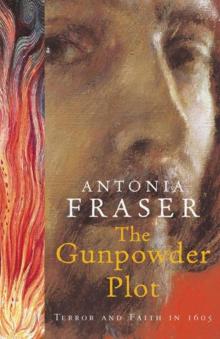 The Gunpowder Plot
The Gunpowder Plot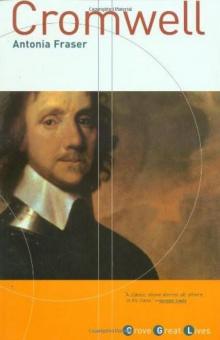 Cromwell
Cromwell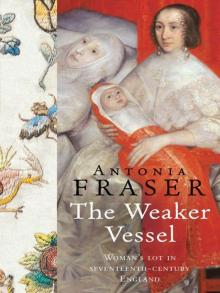 The Weaker Vessel: Women's Lot in Seventeenth-Century England
The Weaker Vessel: Women's Lot in Seventeenth-Century England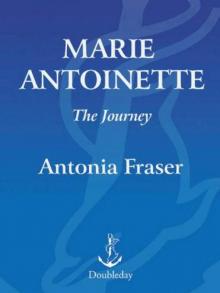 Marie Antoinette: The Journey
Marie Antoinette: The Journey Oxford Blood
Oxford Blood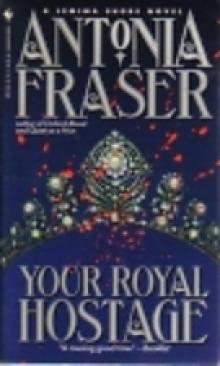 Your Royal Hostage
Your Royal Hostage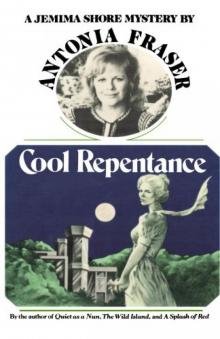 Cool Repentance
Cool Repentance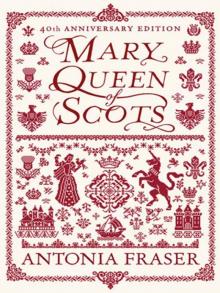 Mary Queen of Scots
Mary Queen of Scots Political Death
Political Death Royal Charles: Charles II and the Restoration
Royal Charles: Charles II and the Restoration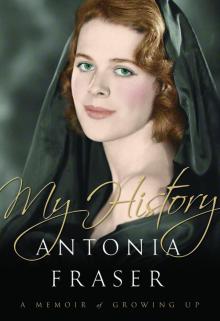 My History: A Memoir of Growing Up
My History: A Memoir of Growing Up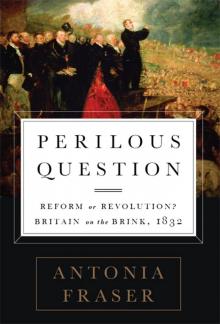 Perilous Question: Reform or Revolution? Britain on the Brink, 1832
Perilous Question: Reform or Revolution? Britain on the Brink, 1832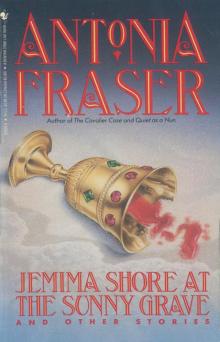 Jemima Shore at the Sunny Grave
Jemima Shore at the Sunny Grave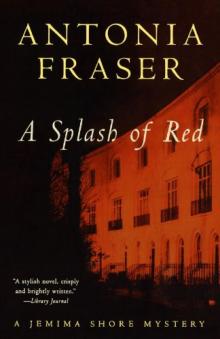 A Splash of Red
A Splash of Red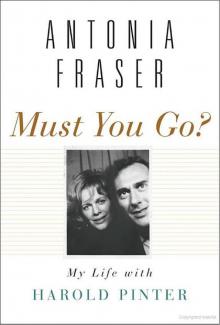 Must You Go?: My Life With Harold Pinter
Must You Go?: My Life With Harold Pinter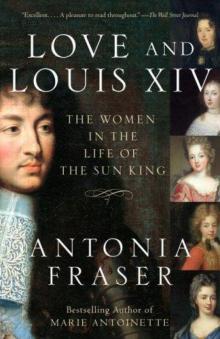 Love and Louis XIV: The Women in the Life of the Sun King
Love and Louis XIV: The Women in the Life of the Sun King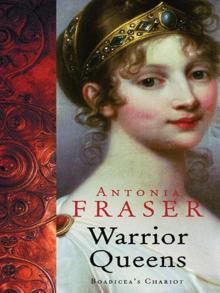 The Warrior Queens
The Warrior Queens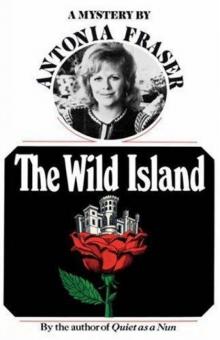 The Wild Island
The Wild Island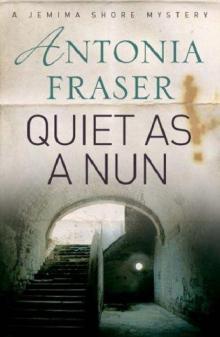 Quiet as a Nun
Quiet as a Nun Perilous Question
Perilous Question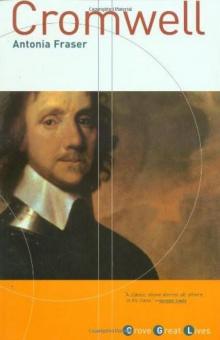 Cromwell, the Lord Protector
Cromwell, the Lord Protector Gunpowder Plots
Gunpowder Plots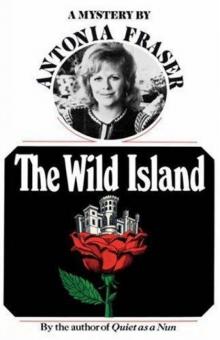 The Wild Island - Jemima Shore 02
The Wild Island - Jemima Shore 02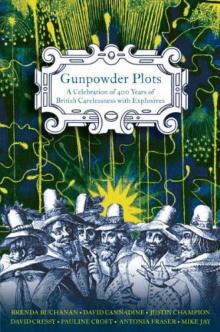 Gunpowder Plots: A Celebration of 400 Years of Bonfire Night
Gunpowder Plots: A Celebration of 400 Years of Bonfire Night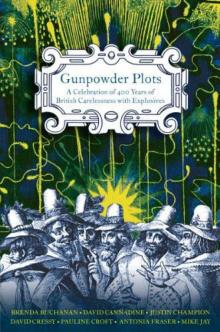 Gunpowder Plots_A Celebration of 400 Years of Bonfire Night
Gunpowder Plots_A Celebration of 400 Years of Bonfire Night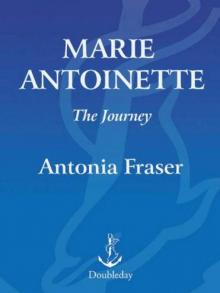 Marie Antoinette
Marie Antoinette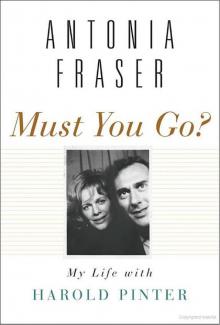 Must You Go?
Must You Go?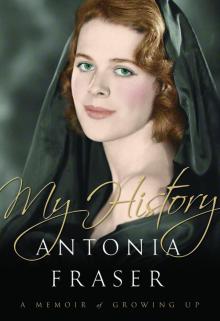 My History
My History